Stents for peripheral arterial disease
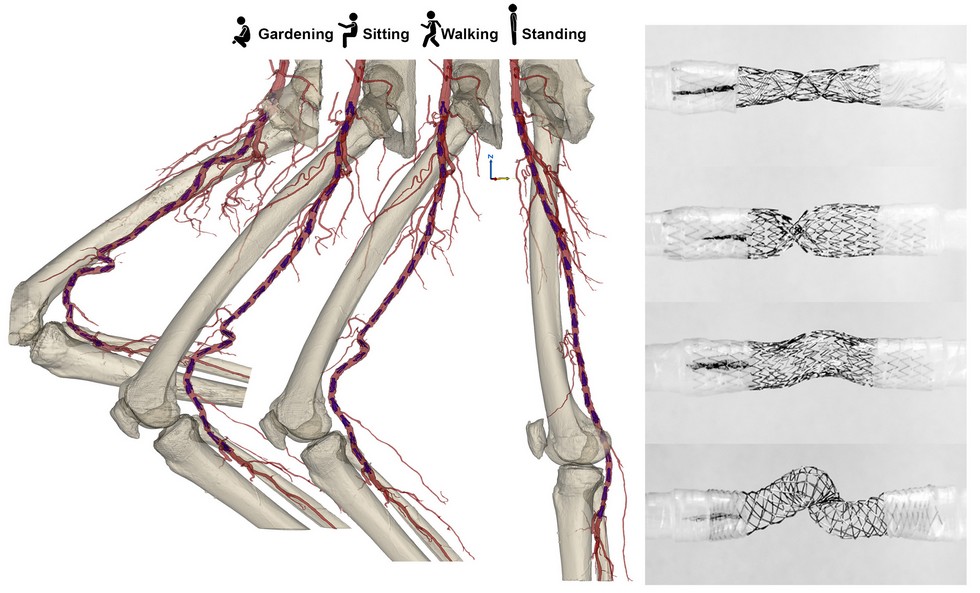
Collaborator: Dr. Jason MacTaggart
Project Description: Angioplasty and stenting for atherosclerotic occlusive disease in the arteries supplying the legs (Peripheral Arterial Disease) is the most common endovascular procedure outside of the heart but carries the highest rate of reconstruction failure. The underlying reasons for these poor results are not completely clear, but the main arterial segment of the leg, the femoropopliteal artery, appears to be significantly different from other peripheral arteries, possibly because of lower blood flow, but more importantly, because it undergoes large deformations during flexion of the limb.
These severe deformations are reflected clinically by the high incidence of stent fractures in this arterial segment. Our research is focused on detailed understanding and quantification of the complex mechanical environment of the femoropopliteal artery in order to determine optimal patient and lesion-specific treatment options for patients with Peripheral Arterial Disease. To achieve this, we are utilizing human cadaver models, large animal models, mechanical and structural characterization, and constitutive and computational modeling.
Aortic Stent-graft that Preserves Elasticity
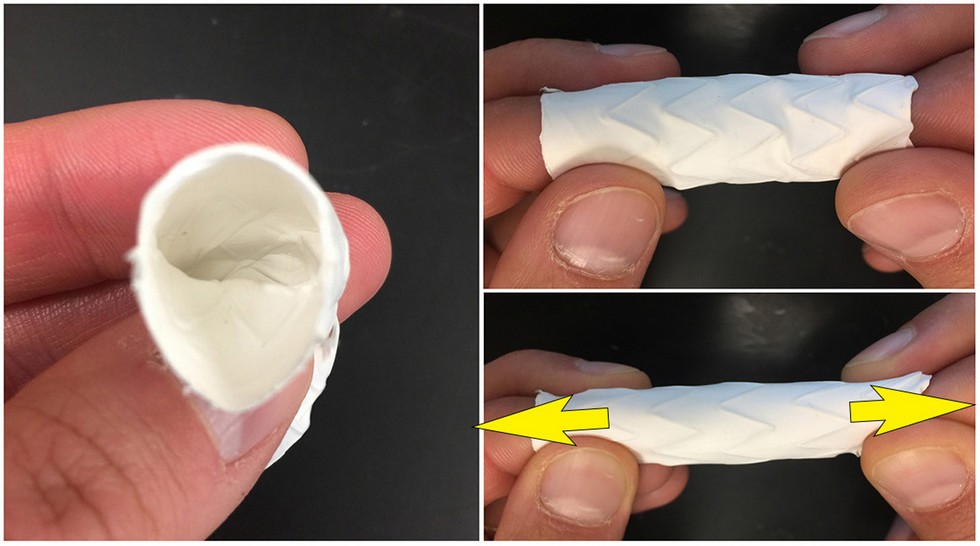
Collaborator: Dr. Jason MacTaggart
Project Description: Aortic elasticity creates a Windkessel effect, which means that the aortas distend following the ejection of blood from the left ventricle during systole and then recoil after aortic valve closure. This feature of ventricular-arterial coupling blunts peak blood pressure and flow waves, providing a cushioning effect that protects the heart from pressure injury, and helps perfuse the coronary arteries and the peripheral vasculature.
Conventional aortic stent-grafts are made of materials that artificially stiffen the aorta and diminish the Windkessel effect. This may overwork the heart, eventually leading to pathological changes. Our team is developing a novel elastomeric nanofibrillar aortic stent-graft that possesses aorta-like mechanical properties and microstructure, and is able to preserve aortic elasticity and the Windkessel effect. We are testing this new device using bench-top, computational, and preclinical large animal models.
Mechanically-Tuned Vascular Grafts
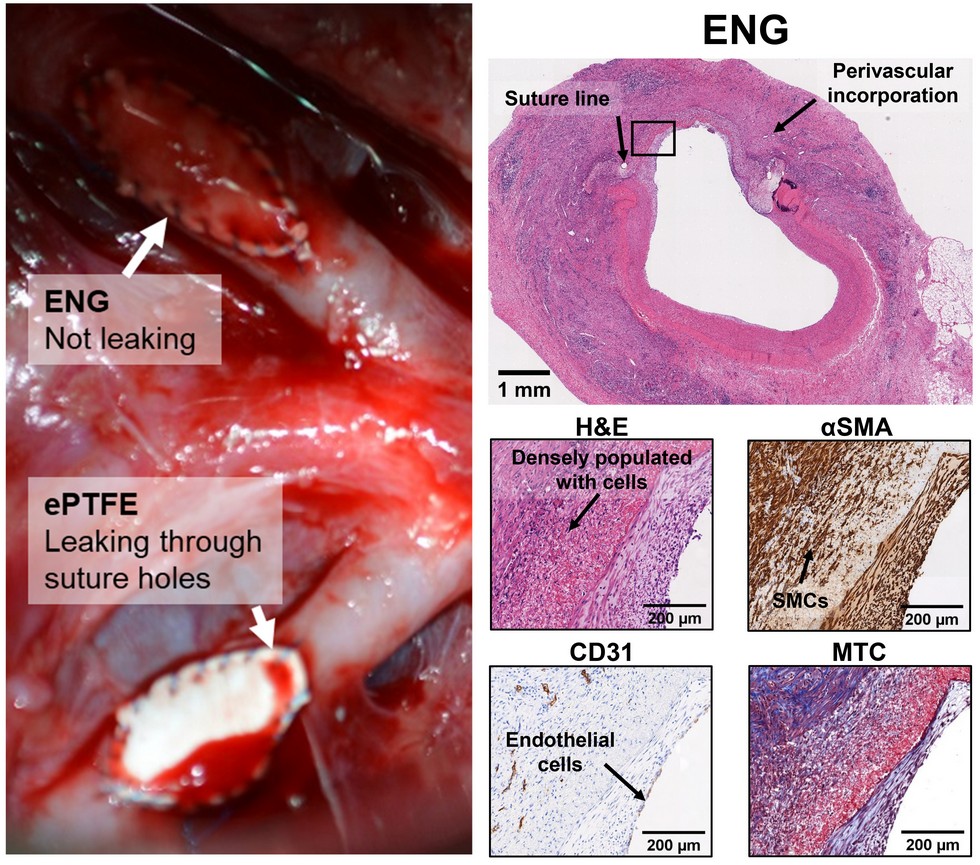
Collaborator: Dr. Jason MacTaggart
Project Description: Mechanical properties of vascular grafts play important roles in healing and tissue regeneration. The heterogeneous multilayer structure of oriented collagen and elastic fibers in the arterial wall are largely responsible for the complex non-linear anisotropic behavior of native vessels.
We use advanced manufacturing methods to simulate this behavior with synthetic materials, and our biomimetic electrospun nanofiber-based vascular graft materials with artery-tuned heterogeneous structure and mechanical properties have shown promising results in preclinical large animal models. These grafts have the potential of improving the patency and durability of vascular repairs while also offering a cost-effective off-the-shelf solution that does not require biological preconditioning.
Wound Dressings
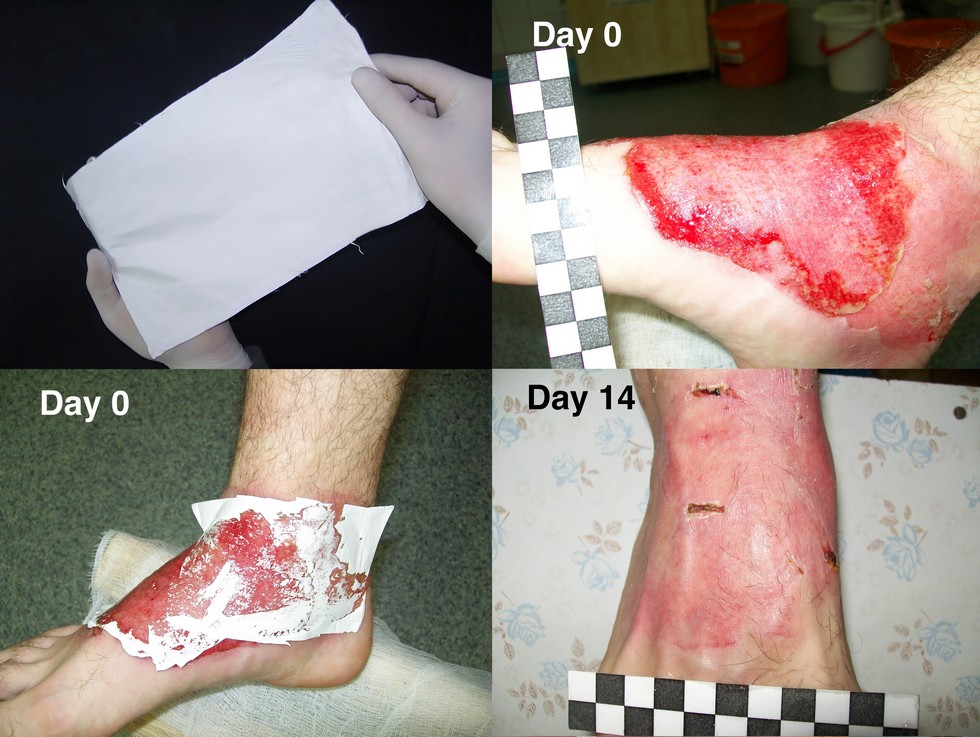
Collaborator: Dr. Mark Carlson, Dr. Jason MacTaggart
Project Description: Large skin traumas such as deep cuts, thermal burns, or ulcers from peripheral arterial disease can require prolonged and expensive treatments that are often complicated by infections, excessive drying or moisturizing of the wound, repeated injuries due to change of dressings, and extensive scarring.
Our team is developing nanostructured materials for wound care that would reduce these complications and provide fast recovery of skin injuries due to their excellent filtering and antimicrobial properties.
Ex vivo Characterization of Human Arteries in the Context of Aging and Risk Factors
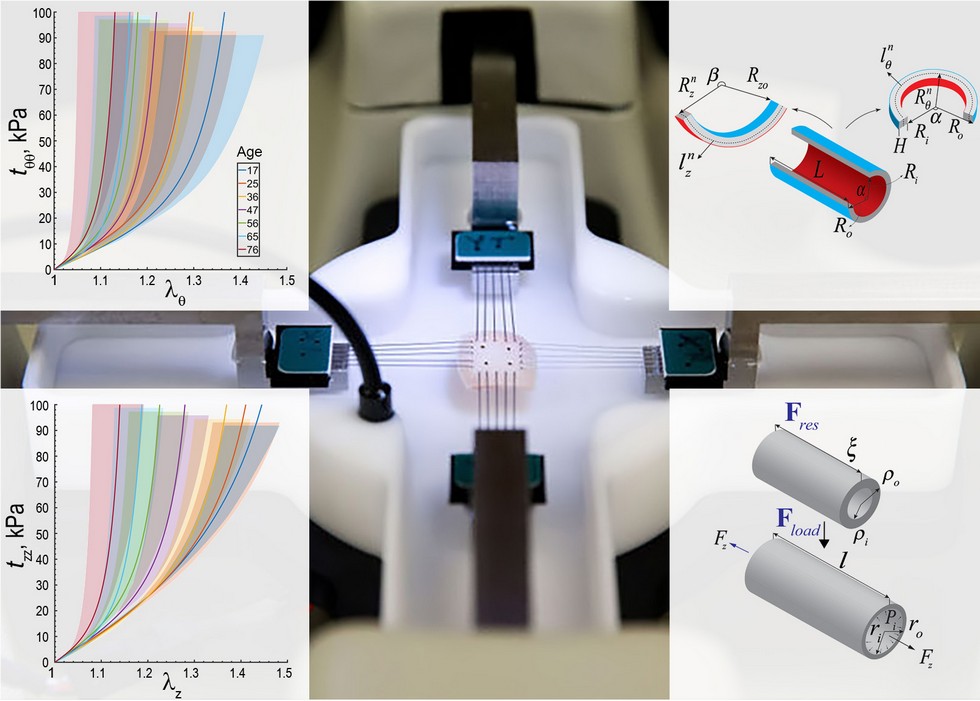
Collaborator: LiveOn Nebraska
Project Description: A better understanding of the arterial structure, function, and mechanical characteristics in the context of aging, risk factors, and disease can help develop better repair materials and devices. We collaborate with the organ and tissue procurement organization LiveOn Nebraska to study ex vivo human elastic and muscular arteries using planar biaxial and inflation-extension testing, and perform structural evaluation of tissues with intravascular ultrasound, conventional histology, multiphoton microscopy, and μCT imaging.
We then apply continuum mechanics and machine learning principles to these data to describe arterial wall mechanical properties and physiologic stress-stretch state in the context of age and risk factors.
Vascular Aging and Remodeling
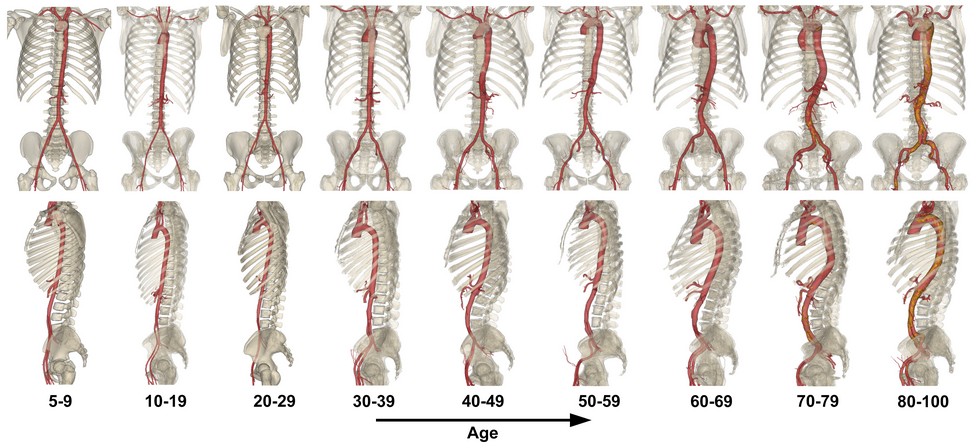
Collaborator: Dr. Jason MacTaggart
Project Description: Human vasculature adapts to the mechanical and biological environments by undergoing changes in morphometry and biomechanics. Detailed characterization of these changes with aging and disease helps better understand arterial pathophysiology and develop improved treatment modalities.
Our research uses clinical imaging, ex vivo characterization, and computational modeling to unravel different aspects of human artery aging and remodeling.
Computational Modeling of Device-Artery Interactions
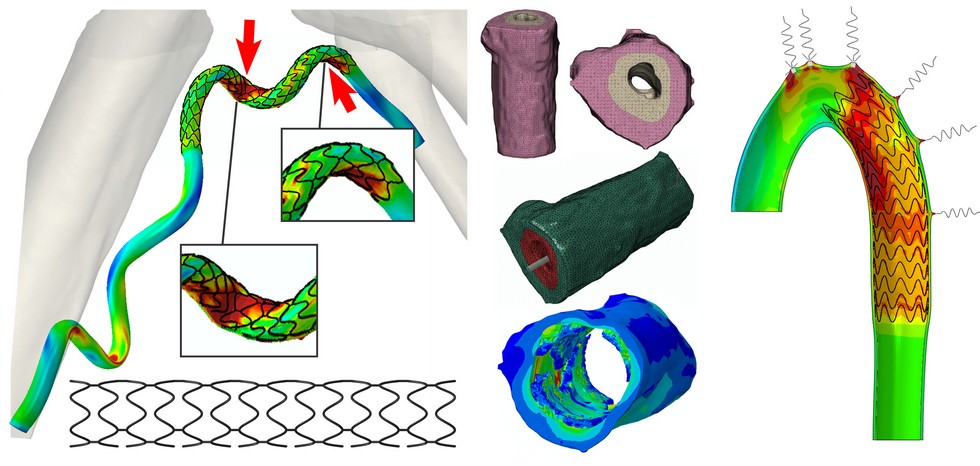
Collaborator: Dr. Jason MacTaggart
Project Description: Mechanical interactions between the repair devices and the arterial wall contribute to treatment and device failures. Because these interactions are a function of many parameters that are difficult to control with bench-top, animal, or human experiments, we use computational modeling to perform parametric studies and identify key elements of device design that result in optimal performance.
Stents, grafts, and stent-grafts designed in silico can then be prototyped, tested on the bench, and evaluated in preclinical models and clinical settings.
Surface Functionalization of Blood Contacting Biomaterials
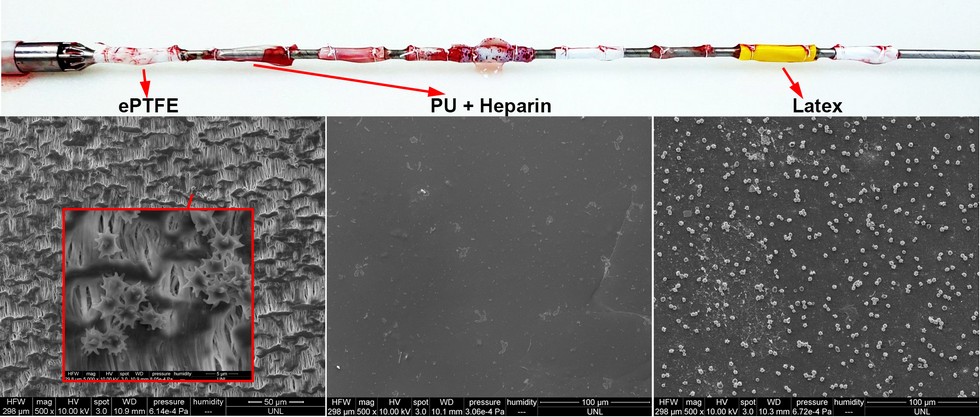
Collaborator: Dr. Stephen Morin
Project Description: Surface properties play critical roles in the function of biomaterials and their interaction with cells and tissues through chemical, physical, and biological processes. We develop surface functionalization methods for blood-contacting biomaterials to improve their hemocompatibility and antibacterial properties.
Cellular Mechanobiology
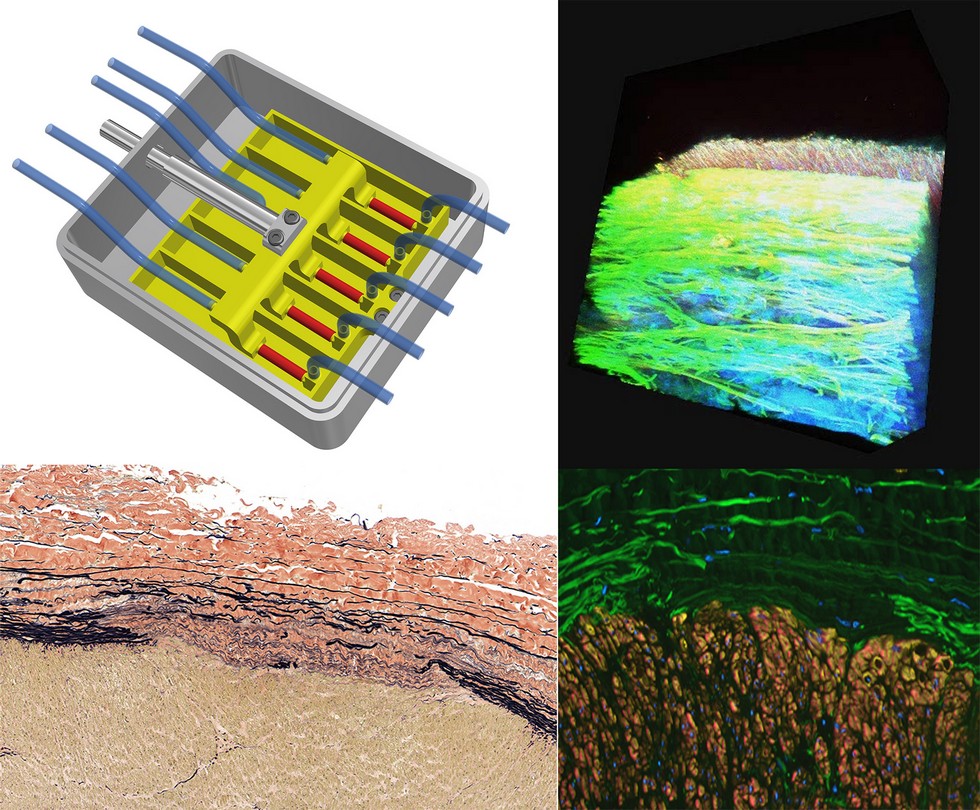
Collaborators: Dr. Jason MacTaggart, Dr. Rebecca Oberley-Deegan, Dr. Heather Jensen Smith
Project Description: A fundamental understanding of processes that drive cellular mechanobiology under normal and perturbed biomechanical conditions is important for understanding vascular changes occurring to arteries during aging, disease, or after repair with surgical materials and devices.
Cell cultures, immunohistochemical analyses, advanced structural imaging, and animal models are used by our team synergistically to unravel different aspects of vascular mechanobiology and interactions between cells, the extracellular matrix, and synthetic repair materials.